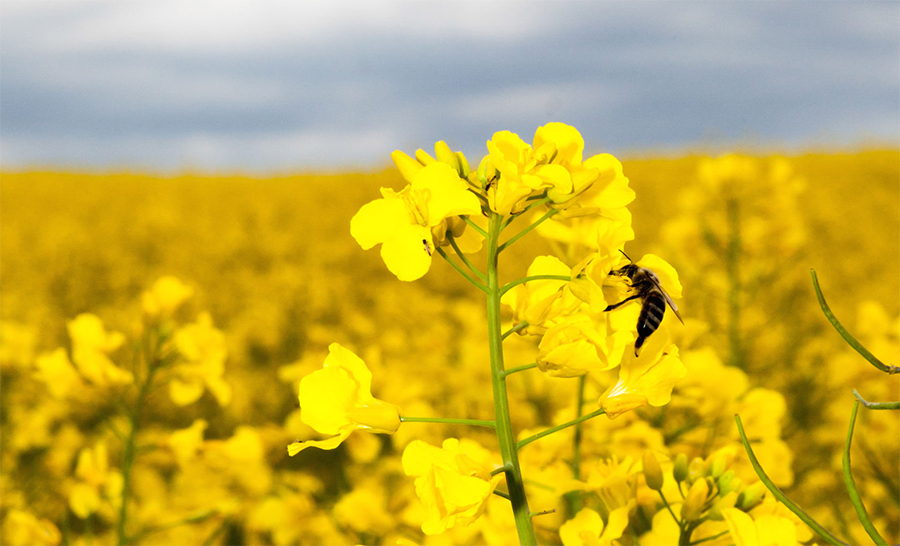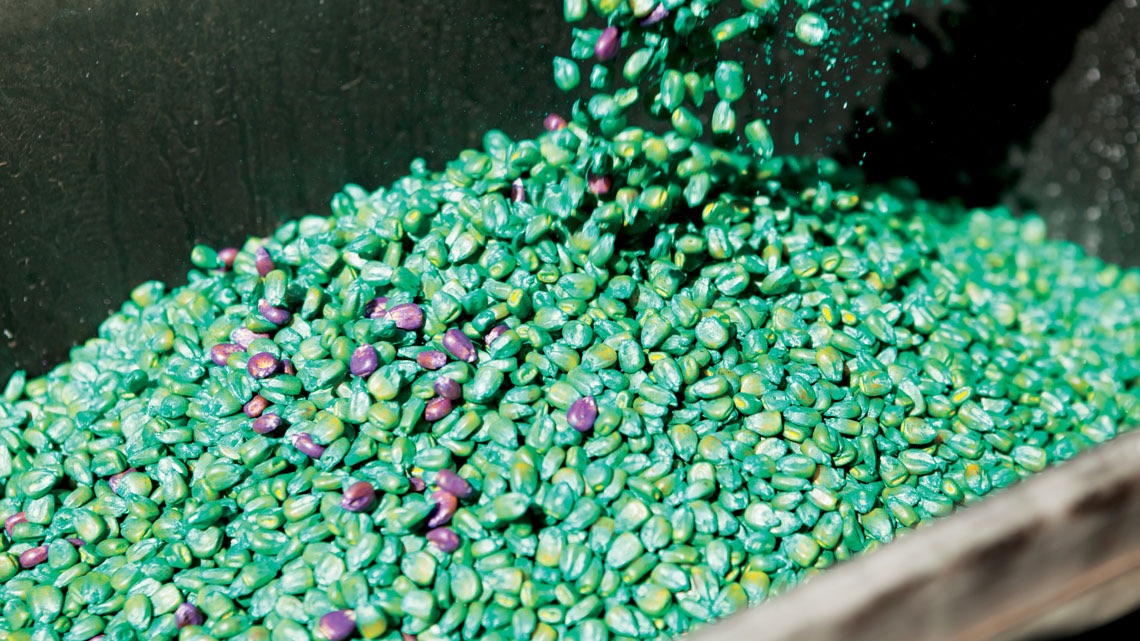
The full cost to farmers of the neonicotinoid ban in 2016 was £18.4 million and resulted in almost 28,800ha of lost crop, a study has found.
Funded by Rural Business Research and the Institute of Agri-Food Research and Innovation, the study alarmingly revealed that farmers increasingly turned to alternative pesticides to control cabbage stem flea beetle (CSFB).
Farmers in the Derogation Area (DA) who had access to neonicotinoid treated seed used 75% less chemicals to control the pest than those who used non neonicotinoid treated seed.
The research was carried out by researchers Charles Scott and Paul Bilsborrow who sampled a sub-set of winter oilseed rape growers from the Farm Business Survey.
The study followed on from an earlier investigation by the researchers into the initial impacts of the neonicotinoid seed dressing ban in 2015, which resulted in a 3% loss of Winter oilseed rape (WOSR) area to CSFB and a 2.5 fold increase in the use of pesticides to tackle the problem.
This follow on report suggests that the impacts in 2016 were more severe, with 5% of the national WOSR area being lost to CSFB.
Farms in the East of the country suffered the greatest crop losses, with 16% of the Suffolk crop area failing, and 13% in East Yorkshire.

'Impact on yield'
Paul Bilsborrow, co-author of the report explains that farms hardest hit by CSFB were more likely to be located in the Derogation Area: “Even if the problem didn’t result in crop failure and re-drilling it was likely to have had an impact on yield.”
Across the country, 72% of farms used insecticides to treat CSFB, the most common being pyrethroids and pyridine azomethine. 136,600 litres of chemicals were used nationally to combat CSFB, adding up to a total 17,500kg of active substance.
The chemicals alone cost £4.3 million and the cost of applying the insecticides was estimated at a further £8.5 million.
Where crops were lost and not re-drilled the bill nationally was £2.9 million and the cost of re-drilling crops destroyed by CSFB totalled £2.6 million across the country.
The study compared insecticide use and crop damage on farms both inside and outside of the Derogation Area, though sample numbers were small.
The farms within the DA that used treated seed used four times less pesticide than those inside the DA without treated seed. The rate of pesticide use with neonicotinoid treated seed was just 0.01kg per ha of active substance, compared to 0.04kg per ha on crops with non neonicotinoid treated seed.
'Fell for fourth consecutive year'
Charles Scott, co-author of the paper explains: “The area of WOSR in the UK fell for the fourth consecutive year in 2016, from a peak of 756,000ha in 2012 to just 597,000 ha in 2016.
“Amongst participants in the study, CSFB was among a range of factors cited for farmer’s reducing their OSR area, including rotational position and price pressures.”
Where higher levels of insecticide were applied, levels of CSFB damage were lower, says Dr Bilsborrow: “Lincolnshire had one of the highest rates of application, accounting for 24% of insecticide use nationally, but suffered one of the lowest proportions of crop losses from CSFB, at just 3%.
“Chemicals are clearly a vital weapon in the battle against CSFB but our study also shows farmers are utilising a range of cultural strategies to combat the pest. Nationally 42% of OSR growers changed drilling dates and within the DA 61% of farmers opted to drill earlier, a further 11% increased seed rates and 19% increased spray applications.”
One clear finding from the report is that the problem is getting worse. Of the farms that were surveyed 26% reported damage greater than in the previous year and only 13% reported less.
“The ban is obviously having a major impact on the viability of OSR in England. Without access to treated seed in the high risk areas, especially in Eastern England for 2017, it’s possible that CSFB damage will be even greater this year,” concludes Mr Scott.
